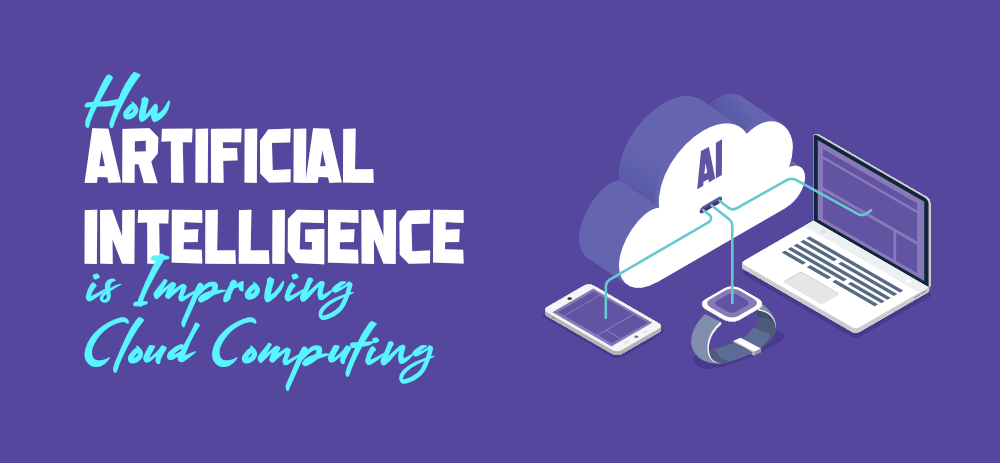How midsize companies are vulnerable to data breaches and other cyberattacks

Since almost the start of 2020, businesses have increasingly turned to remote
work, grown the number of devices connecting to their networks, and expanded
their use of the cloud. In reaction, more cybercriminals have stretched their
repertoire to include ransomware attacks via the cloud and email, endpoint
malware, Wi-Fi phishing and insider threats. The security industry also has a
tendency to focus on the enterprise market with expensive and expansive
products, thus sometimes neglecting mid-market companies. Plus, the security
products used by smaller businesses are often misconfigured. ... But less than
1% of midsize companies have Wi-Fi phishing protection in place, while 90% of
the ones that do have misconfigured them. In this type of environment, midsize
companies are vulnerable because many lack the required security teams, the
in-house expertise or the advanced and expensive security tools needed to defend
themselves. As a result, many such businesses are unable to properly safeguard
the company.
Why Sabre is betting against multi-cloud

“We were able to start making that journey, but we had not done a lot in the
cloud before. So, originally, we went on path where we made deals with all the
major cloud providers. We were thinking: well, let’s go down the multi-cloud
path until we see if there’s something better, because, quite frankly, we didn’t
know what we didn’t know and we didn’t want to make the mistake of committing to
anybody too early.” And while the leadership was behind the move, DiFonzo felt
like he had to get an early win, in part because the company’s customers also
had to be on board. For that, the team picked one of Sabre’s most important and
most CPU-intensive services: its shopping application, which previously ran in
its own Tulsa, Oklahoma data center. That’s where a lot of revenue for Sabre’s
customers is generated, so by being able to show improved performance and
stability for this service, the team was able to build up credibility for the
rest of its roadmap. But by mid-2018, the team realized that using multiple
clouds became a limiting factor.
How Artificial Intelligence is Improving Cloud Computing?

Embedding artificial intelligence into the cloud framework helps improve data
management by automating redundant tasks, identifying, sorting, and indexing
different types of data, managing data transactions on the cloud, identifying
any faults in the cloud infrastructure, and ultimately streamlining the whole
data management process. With the advent of the SaaS model, it became possible
to host not just data but also complex software applications and even entire
virtual computers on the cloud which users could access and use as per their
requirements. To improve the cloud computing experience further, SaaS
application developers began to fuse AI with their applications and the result
was the availability of powerful SaaS software applications that were empowered
by AI and ready to offer greater functionality to end-users. A popular example
is Salesforce Einstein, Salesforce’s intelligent solution for businesses that
use the power of artificial intelligence for predictive analytics, deeper data
insights, comprehensive user-behavior reports, and much more, thereby providing
data that businesses can use to formulate their sales strategies and increase
their profits.
CQRS pattern

Having separate query and update models simplifies the design and
implementation. However, one disadvantage is that CQRS code can't automatically
be generated from a database schema using scaffolding mechanisms such as O/RM
tools. For greater isolation, you can physically separate the read data from the
write data. In that case, the read database can use its own data schema that is
optimized for queries. For example, it can store a materialized view of the
data, in order to avoid complex joins or complex O/RM mappings. It might even
use a different type of data store. For example, the write database might be
relational, while the read database is a document database. If separate read and
write databases are used, they must be kept in sync. Typically this is
accomplished by having the write model publish an event whenever it updates the
database. For more information about using events, see Event-driven architecture
style. Updating the database and publishing the event must occur in a single
transaction.
Top lesson from SolarWinds attack: Rethink identity security

“You’ve got to maintain that [identity] infrastructure. You’ve got to know when
it’s been compromised, and when somebody has already got your credentials or is
stealing your tokens and presenting them as real,” he said. Digital identity
management is notoriously difficult for enterprises, with many suffering from
identity sprawl—including human, machine, and application identities (such as in
robotic process automation). A recent study commissioned by identity security
vendor One Identity revealed that nearly all organizations — 95% — report
challenges in digital identity management. The SolarWinds attackers took
advantage of this vulnerability around identity management. During a session
with the full Gartner conference on Thursday, Firstbrook said that the attackers
were in fact “primarily focused on attacking the identity infrastructure” during
the SolarWinds campaign. Other techniques that were deployed by the attackers
included theft of passwords that enabled them to elevate their privileges (known
as kerberoasting); theft of SAML certificates to enable identity authentication
by cloud services; and creation of new accounts on the Active Directory server,
according to Firstbrook.
3 reasons devops must integrate agile and ITSM tools

Devsecops practices alone don’t cement the collaboration required to bring
development, operations, and security functions together to meet these
objectives. It requires implementing, tracking, and measuring workflows that
span these functions. For many organizations, these workflows bring together
agile methodologies used by development teams, including scrum and kanban, with
IT service management (ITSM) practices managed by ops, including request
management, incident management, problem management, change management, and
maintaining a configuration management database (CMDB). Yet, many IT
organizations fail to integrate their agile and ITSM tools. The development
teams might be using Azure DevOps, Digital.ai, Jira Software, or another agile
tool to manage backlogs of user stories, sprints, and releases in the
development process. Independently, ops may be using BMC, Cherwell, Ivanti, Jira
Service Management, Micro Focus, ServiceNow, or another ITSM tool to manage
tickets, track systems, and oversee change management.
An Important Skill for Data Scientists and Machine Learning Practitioners

Data Science as a discipline and profession demands its practitioners possess
various skills, ranging from soft skills such as communication, leadership to
hard skills such as deductive reasoning, algorithmic thinking, programming, and
so on. But there’s a crucial skill that should be attained by Data Scientists,
irrespective of their experience, and that is writing. Even Data Scientists
working in technical fields such as quantum computing, or healthcare research
need to write. It takes time to develop strong writing ability, and there are
challenges that Data Scientists confront that might prevent them from expressing
their thoughts easily. ... Many experts believe that blogs and articles have a
unique role in the machine learning community. Articles are how professionals
stay up to date on software releases, learn new methods, and communicate ideas.
Technical and non-technical ML articles are the two most frequent sorts of
articles you’ll encounter.
What the hell is the difference between a data analyst and a data scientist?

Just like data analysts, data scientists work towards answering a particular
business question that requires data-driven insight. However, data scientists
are primarily concerned about estimating unknowns, using algorithms and
statistical models to answer these questions. As a result, a key difference is
the extent of coding employed in data scientist roles. In this respect, data
science roles can be challenging as they require a blend of technical skills and
an understanding of business problems in context. A data scientist will often
find himself or herself trying out different algorithms to solve a particular
problem and might even have to be familiar with pipeline automation. Data
scientists also get their hands dirty with much larger sets of data than
analysts do and are thus required to possess the skills to explore and model
huge amounts of unstructured data, often in a parallel fashion using languages
like Scala. Many data scientists eventually realize that a big part of their job
involves just cleaning and processing raw data from a multitude of sources and
making sure that this process can be replicated for actual deployment and
prediction.
Building multichain is a new necessity for DeFi products

This trend is fueled, in part, by the Polkadot and Kusama ecosystem that was
built with a multichain philosophy at its core. Parachains connected to the
relay chain easily communicate with one another, raising the bar even higher for
the entire space. With the second set of parachain slot auctions just around the
corner, they continue to set the standard for the multichain industry. Projects
that make it easier for the average user to connect more systems — such as the
Moonbeam protocol and the Phantom wallet — are raising millions of dollars to
simplify this new multichain reality for users. But how do you navigate this as
a developer? We can see clearly that the market is shaped by user demands.
Depending on their needs, your users are turning to blockchains that better
serve them — and to the platforms that offer access to them. As a result,
projects that support multiple chains gain larger audiences and more liquidity.
This means that at a minimum, your DeFi product needs to support Ethereum and a
“niche” blockchain — there are established leaders for trading, staking,
nonfungible tokens (NFTs) and more. And the more chains with which you can
interact, the better.
The 5 Biggest Blockchain Trends In 2022

Blockchain is hugely compatible with the idea of the Internet of Things (IoT)
because it is great for creating records of interactions and transactions
between machines. It can potentially help to solve many problems around security
as well as scalability due to the automated, encrypted, and immutable nature of
blockchain ledgers and databases. It could even be used for machine-to-machine
transactions – enabling micropayments to be made via cryptocurrencies when one
machine or network needs to procure services from another. While this is an
advanced use case that may involve us traveling a little further down the road
before it impacts our day-to-day lives, it’s likely we will start to hear about
more pilot projects and initial use cases in this field during 2022. Innovation
in this field is likely to be driven by the ongoing rollout of 5G networks,
meaning greater connectivity between all manner of smart, networked equipment
and appliances – not simply in terms of speed, but also new types of data
transactions including blockchain transactions.
Quote for the day:
"Good leadership consists of showing
average people how to do the work of superior people." --
John D. Rockefeller
No comments:
Post a Comment